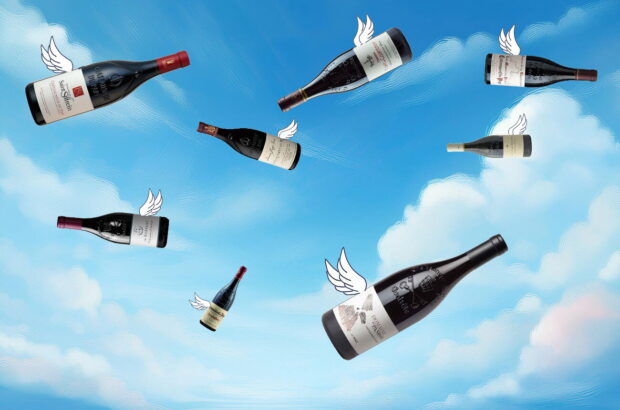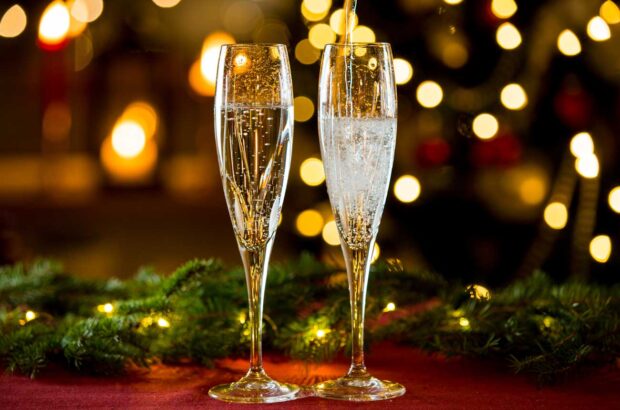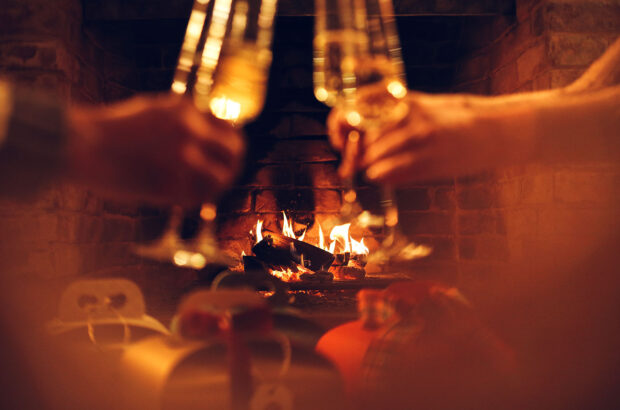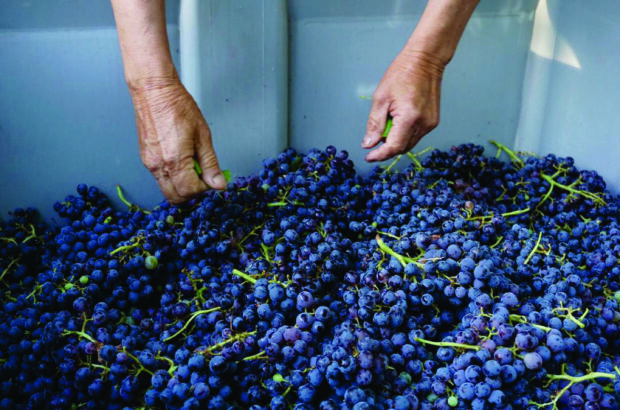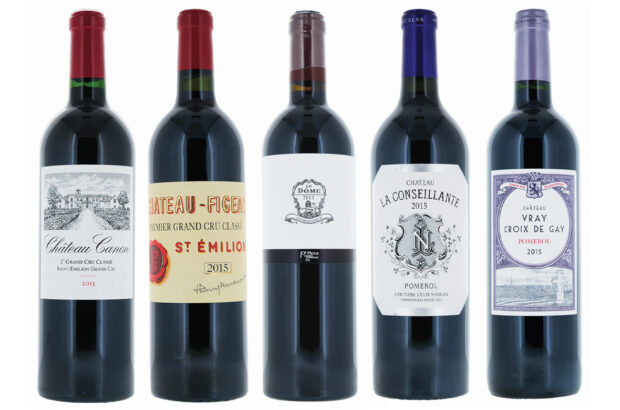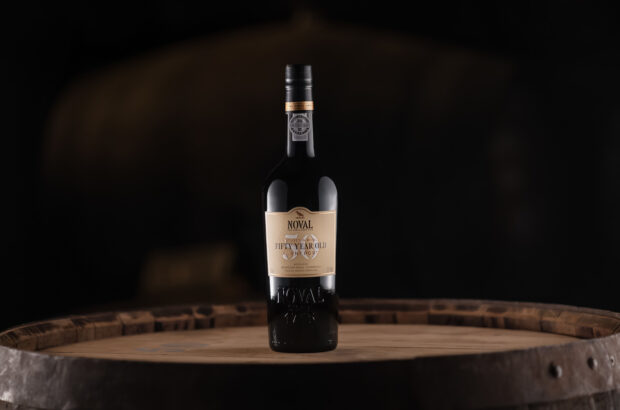The Loire Valley offers a remarkable diversity of wines. Looking for a light, dry white to go with your fruits de mer? No problem. A sweet white that is delicious, young and can last a century? No problem. A light red to chill for a summer picnic and a full-bodied red to age? No problem. A complex white for a special dinner? Again no problem.
I could go on but will just mention the attractive dry rosés as well as the demi-sec ones (Cabernet d’Anjou rather than Rosé d’Anjou). Then there are the bottle fermented sparkling wines. The only style not made commercially is fortified wines, although I am sure you can find examples hidden away in a corner of some limestone cellar. I have tasted Chenin made in the oxidised Jura style along with a very good Viognier picked at 13.5 degrees alcohol, but you mustn’t tell the INAO about the Viognier as they’ll go apoplectic!
In the days of growing multinational wine companies, the Loire remains essentially a family affair. Here are just a few of the wines and characters who make the Loire such a fascinating region.
PAYS NANTAIS
Domaine de Herbauges
Quietly spoken Luc Choblet is one of the leading growers in Muscadet Côtes de Grandlieu. This is the Muscadet appellation found to the southwest of Nantes. The Domaine de Herbauges is close to the small town of Bouaye, which is on the north side of the Lac de Grand-Lieu. Much of the Lac is a nature reserve. Luc and his son Jérome make a number of different Muscadets according to the different sites and soils of the Domaine.
Recommended: The two top wines are the weighty Clos de Senaigerie and the more mineral and lemony Clos de la Fine.
Guy Bossard
Guy is proof that it is possible to produce high-quality wines in the Loire using biodynamic methods even though the Pays Nantais, with its proximity to the Atlantic, is not the easiest wine region to forsake the chemical arsenal. His Muscadets have real character and age well. As do well-made Muscadets from other producers.
Recommended: Domaine de l’Ecu – a revelation to those who dismiss Muscadet as mere prawn and oyster fodder. Not only is Bossard an influence in the Pays Nantais, but he has supported other Loire producers moving to organic and biodynamic viticulture, as well as travelling overnight from the Loire to attend a seminar and tasting of leading vignerons in Languedoc.
Some other recommended producers
Serge Batard (Domaine les Hautes Noëlles – Muscadet Côtes de Grandlieu), Chéreau-Carré, Gadais Père et fils, Louis Métaireau, Papin-Luneau, Sauvion (including Château du Cléray).
ANJOU-SAUMUR
Domaine des Baumards
Florent Baumard is a shining example of the new generation of young winemakers who are bringing the Coteaux du Layon, Quarts de Chaume, Bonnezeaux and Savennières wines to the fore. The grapes for both sweet and dry whites are picked in several runs and brought to the vat-house in shallow baskets. ‘I want the bunches to arrive undamaged, ready to be displayed on a fruit stall,’ he says. ‘Take a grape between your finger and thumb and squeeze it gently,’ Baumard suggests. ‘The first juice tends to be bitter. Exert a little more pressure and the second juice will be sweeter. And the final juice from the pips and skins will be best of all.’
Baumard applies this principle to his press, crushing the grapes gently in stages rather than in one go, and grading the juices into different qualities. These various lots are then blended to produce the best wines.
Recommended: Cuvée Trie Special Savennières 1997 – picked in three runs. A long life ahead. Drink with firm-fleshed fish, crab or lobster.
Clos de Sainte Catherine Coteaux du Layon 1999 – very refined, elegant botrytised wine. As an aperitif, or with soft cheeses like Roquefort, ripe Stilton. For dessert, marries well with pears.
Quarts de Chaume 1998 – honey and mango on the nose. Rich and full on the palate. Remarkable sugar/acid balance. Very, very long length. Excellent.
Chateau du Breuil
Marc Morgat is president of the Bureau d’Angers, vice-president of the Inter-Loire Wine Syndicate in Angers and owner of Château du Breuil in the Coteaux du Layon Beaulieu appellation producing succulent sweet, botrytised wines similar in style and close in quality to Quarts de Chaume and Bonnezeaux. In the years 1988–90, Morgat, with a small group of producers began producing botrytised wines in the true tradition with harsh pruning, late harvesting in several runs, fermenting and ageing in wood. But these succulently sweet wines, lacking international recognition, developed a system of direct sales. ,br />
‘There are négociants in Anjou,’ Morgat says, ‘but they did not believe in great wines. They wanted cheap wines for large-scale distribution. With improved quality, growers developed direct sales. That is now changing and négociants are even harvesting the grapes themselves which should boost our image.’ This has been the case at Ackerman-Laurance/Rémy Pannier, whose wines have improved beyond all recognition over the past few years.
Recommended: Orantium Coteaux du Layon Beaulieu 1996 – late-harvest from 100-year old vines and aged two years in wood. This is succulently rich but sinewy with great stamina due to the acidity. Tobacco on the nose with hints of melon and grapefruit. Lingers long on the palate.
Bernard Germain
Bernard Germain, who owns several châteaux in Bordeaux including Saint-Emilion grand cru classé Yon-Figeac, realised the potential and invested heavily in the Loire. ‘In this spot I found a wine region whose personality and exceptional terroir transcend my passion for wine and my creative spirit,’ Germain says. He has become a passionate admirer of Chenin Blanc. ‘I am now convinced that it is possible to make good sweet wine in the Layon every year.’
Germain now has four estates in the region: Château de Fesles (Bonnezeaux) in Thouarcé, Château de Varennes (Savennières), Château de la Roulerie (Coteaux du Layon Chaume) and Château de la Guimonière (Coteaux du Layon Chaume).
All the wines are made in the modern winery at Château de Fesles. The barrel ageing store is impressive. The range of wines covers eight individual Anjou appellations: Bonnezeaux, Savennières, Coteaux du Layon Chaume, Coteaux du Layon, Anjou Rouge, Anjou Villages, Anjou Blanc and Rosé d’Anjou.
Recommended: Château de Fesles, Anjou Rouge Vieilles Vignes – 100% Cabernet Franc hand-picked. Deep ruby, intense nose of small red berries and blackcurrant and blackberry. Fleshy and elegant with a subtle, lingering aftertaste.
Honeyed words: a sweet wine future
Domaine des Roches Neuves
It was Germain’s son, Thierry, who inspired his father to come to the Loire region. In Varrains, his Domaine des Roches Neuves (Saumur Champigny, Saumur) appellation has become a pace-setter and, although an expert oenologist and winemaker, the younger Germain refers to himself as a vigneron because for him no great wine can be produced without top-quality fruit.
‘Wine is the heart and soul of the vigneron and his terroir,’ he declares. ‘We will only move forward and compete with the marketing giants by making the most of our individual appellations, however small they may be.’
Germain’s wines in the 2000 vintage may be the best he has made since buying the property from Denis Duveau in 1991. In a difficult year Germain has managed to get impressive concentration through the employment of careful vineyard management. The range of Saumur-Champigny runs through from the domaine wine to the oak-aged Terres Chaudes and on to Marginale, which spends at least 12 months in new oak.
Recommended: Domaine de Roches Neuves (Saumur) L’Insolite 1996 – made from 75-year old vines on clayey-limestone, harvested in several runs. Fermented in new wood, this is a rich powerful dry white made entirely from Chenin Blanc. It should not be drunk until three or four years old.
Domaine René Renou
René Renou, Chevalier of the Legion of Honour, was made president of the National Wine Committee of the INAO in Paris. Naturally, he wholeheartedly agrees with Thierry Germain. ‘The concept of an appellation does not depend on size,’ he explains. ‘It is the identification of a specific terroir. Otherwise Romanée-Conti or Coulée de Serrant would not exist.’
Renou graduated with a degree in law and his family has an 18ha vineyard in Bonnezeaux. He has been the owner of Domaine René Renou since 1996. Prior to this, he was a partner in the Domaine de Terrebrune, which makes the full range of Anjou wines.
Coopérative des vignerons de Saumur
‘The cooperatives are important actors in the trade, in the same way as the négociants,’ Renou emphasises. In Saumur, the cooperative makes the wines for 300 growers working 1,300ha of vines, and represents 35–40% of production in the Saumur-Champigny region. The wines have won numerous prizes and been selected by English merchants such as Waitrose, Tesco, Direct Wines and Balls Bros. The new fermentation complex, tested and ready to receive the 2001 vintage, is a remarkable technical accomplishment using ‘intelligent’ wine presses specially developed by the local manufacturer, Vaslin-Bucher in Chalonnes. A built-in computer calculates operations in relation to the state of the must and the cellarmaster’s requirements.
Since 1997, the cooperative has been selecting wines by the lieu-dit (place-name) where the grapes were harvested.
Recommended: Lieu-dit ‘les Pouches’ white and red Saumur Lieu-dit ‘les Poyeux’ 1999 red Saumur Champigny, which is 100% Cabernet Franc. Reserve des Vignerons is one of the top wines in the region.
Some other recommended producers
Anjou: Angeli, Domaine de Bablut, Baudouin, Cady, Delesvaux, Domaines des Forges, Domaine de Montgilet, Ogereau, Château Pierre-Bise, Pithon, Richou, Domaine des Rochelles, Château la Varière.
Saumur: Domaine de Nerleux, Clos Rougeard, Domaine Saint Just, Domaine de Château de Villeneuve, Château Yvonne.
TOURAINE
Couly-Dutheuil
Jacques Couly, president of the Bureau de Tours, is one of Chinon’s great personalities and a leading member of the wine fraternity. ‘The Chinon appellation possesses all the characteristics of a great terroir,’ he explains. ‘Its semi-oceanic climate is exceptionally mild and the variety of soils enables the Cabernet Franc to express all its finesse and “taffeta” texture.’
The Couly-Dutheuil winery, founded in 1921, is still in the hands of the family. The ancient quarries, used to extract tufa stone for building, are ideal for ageing and storing. Covering 78ha in the Chinon appellation plus seven hectares in Saumur-Champigny, its range caters for every taste from the delicious vin de plaisir, an elegant aromatic white, hand picked and aged sur lies fines, to the majestic Cabernet Franc reds, especially from Clos de l’Olive and the Clos de l’Echo, with their fabulous silky texture. Its influence throughout the region has been immense.
Recommended: Domaine René Couly 1997 – grown on clayey-silica soil, oak-aged for eight months. Classic Chinon wine, nutty, pure pleasure. Baronnie Madeleine 1997 – oak-aged wine which is lace-like, with the tang of authenticity. Very rich, very elegant. Clos de l’Echo 1997 – 50-year-old vines, barrel-aged, only released after five years. Top-class, touch of cedar and discreet power – a great wine to come.
Couly-Dutheil, Les Chanteaux, Chinon, Loire, France, 2015
Vignoble de la Jarnoterie
In Saint Nicolas de Bourgueil and owned by Jean-Claude Mabileau and Didier Rezé, this domaine produces 80,000 bottles. The special feature of the estate, which is planted on siliceous clay, is that the wines are aged in cellars carved out underneath the vineyard. Ventilation shafts can be seen among the vines, reminding you of what lies beneath.
‘To appreciate the Cuvée Concerto,’ the owners suggest, ‘you need to empty the mind and give your senses reign in epicurean pleasure.’
Recommended: Cuvée MR – aged in barrels of chestnut for four to six months. Fresh and fruity, it’s easy drinking wine for white meat and cold cuts.
Cuvée Concerto – a virtuoso wine from old vines, aged eight months in wood. Intense aromas of raspberry, hint of violets and pepper. Powerful wine for laying down.
Rosé – made from Cabernet Franc by saigné. Semi-sweet, fruity, excellent balance – goes with asparagus, grilled fish.
Some other recommended producers
Chinon: Philippe Alliet, Bernard Baudry, Christophe Baudry, Charles Joguet (wines now made by Alain Delaunay).
Bourgueil: Yannick Amirault, Pierre-Jacques Druet.
Saint Nicolas de Bourgueil: Frédéric Mabileau, Pascal and Alain Lorioux. Montlouis: Berger Frères, Chidaine, Deletang, Dominique Moyer, Domaine de la Taille aux Loups.
Touraine: Paul Buisse, Jacques Delaunay, Joël Delaunay, Clos Château Gaillard, Clos Roche Blanche and Jacky Preys.
Vouvray: Catherine and Didier Champalou, Bourillon-Dorleans, Philippe Foreau, Bernard Fouquet, Alain Rohart.
CENTRAL VINEYARDS
Alphonse Mellot
Driving into the main square of the picturesque hilltop town of Sancerre, it is very easy to imagine that you have been transported to the land of Mellot, since almost every shop appears to be owned by either Alphonse or Joseph Mellot. Alphonse the 18th is the great character of Sancerre. He knows the appellation in great detail and tastes widely. And along with Jean-Marie Bourgeois, Alphonse has provided the leadership and encouragement that has helped to build a sense of common purpose in the appellation and brought on a number of highly promising young vignerons.
One of these young vignerons is Alphonse Jnr – the first- born Mellot son is always Alphonse, which makes choosing names very easy for the family. Junior’s greatest influence has been to persuade his father to treat red Sancerre as a serious wine, because in the past Mellot Senior had always concentrated all his attention on the whites.
Recommended: Cuvée Edmond – fermented in new oak. This proves that top Loire Sauvignon merits its use, and the oak marries perfectly.
Generation XIX – a revelation. Made with reduced yields, it shows that red Sancerre can easily stand alongside village wines from the Côte d’Or.
Chateau de Tracy
Of the many idyllic stops on the Loire, few of them are as charmingly pastoral as Château de Tracy. The small hamlet of Tracy has a secluded spot by the Loire, well away from the hurrying traffic heading south on the busy N7. The 15th-century château stands in beautiful, broad parkland and faces southwest, looking down a gentle slope towards the river Loire.
In contrast the château’s nearby vineyards are decidedly flinty with almost no soil at all. Here Comte Henri d’Assay has built up the quality of Tracy through the 1990s until it is among the best of the appellation. The modern winery has been shoehorned into the old farm buildings.
D’Assay does not believe in a plethora of different cuvées. The wine is either good enough to carry the château’s name or it is not – his philosophy is as simple as that. In most vintages Château de Tracy needs two or three years in bottle to show its best, so bear this in mind when buying.
Some other recommended producers
Menetou-Salon: Domaine de Chatenoy, Henri Pellé, Teiller.
Sancerre: Henri Bourgeois, François Cotat, Lucien Crochet, Vincent Pinard, Pascal and Nicolas Reverdy, Jean-Max Roger, Domaine Vacheron, André Vatan.
Pouilly-Fumé: Didier Dagueneau, Serge Dagueneau, Masson-Blondelet, Roger Pabiot.


